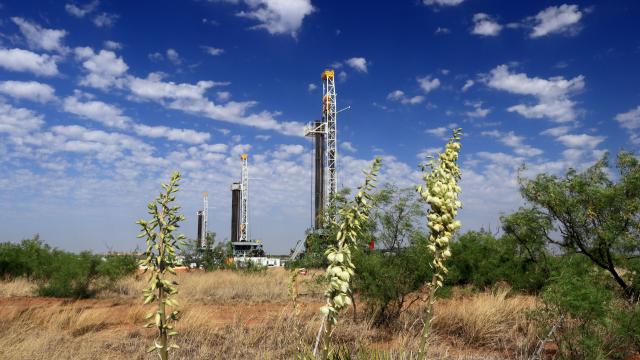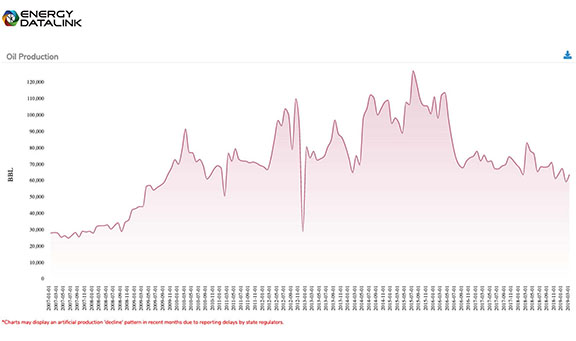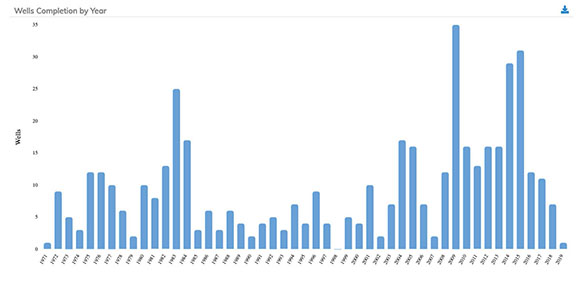
(Source: Shutterstock.com)
The Permian Basin continues to lead U.S. production growth and shatter output records, though momentum is currently slowing. Questions frequently arise, for a variety of reasons, over whether the basin may be running out of steam.
In part, this is down to the fact that Permian drillers—and the shale industry more broadly—are struggling with oil price swings and shareholder pressure to focus on returns over growth. However, a report published on July 23 by energy data analysis firm Kayrros has also sparked additional interest in the question of Permian productivity. The company said its findings—based on satellite data and proprietary algorithms—showed that hydraulic fracturing activity in the basin was being underreported by more than 20%.

Kayrros believes that current Permian production has been achieved with more wells than previously thought, which would have negative implications for well economics, making the average well less productive than reflected by public data. It also has implications for drilled but uncompleted (DUC) counts in the basin, with Kayrros concluding that the backlog is considerable smaller than previously thought. This challenges the assumption that a large DUC inventory could be quickly brought online in the event of an oil crisis.
The findings will be welcomed by those who have been warning—for years in some cases—of shale’s pitfalls. It is important to remember, though, that shale has repeatedly exceeded all expectations. And while Permian drillers are undoubtedly grappling with a particularly challenging operating environment currently, they could still defy critics yet again.
“I would never underestimate the resilience of the industry and its ability to become more efficient,” Kayrros’ chief analyst and co-founder, Antoine Halff, told Hart Energy. “But at the same time, these numbers do indicate that the industry is a bit less efficient than would seem to be the case based on reported numbers.
The numbers Kayrros is comparing its findings to come from fracking chemical registry FracFocus, which started out as a voluntary database. More recently, a number of states have made it compulsory for operators to report the chemicals used in their fracking fluids, though most allow for some measure of trade secret protection. Texas and New Mexico, where the Permian Basin is located, both require reporting to FracFocus.
Kayrros’ research identified 6,394 completed wells for 2018, with this representing a 21% increase on the FracFocus estimate of 5,272 wells as of June 20, 2019. The other figures suggested by Kayrros, including the sand and water intensity of Permian production, were estimates, rather than actual measurements.
“We took the average water and sand consumption of a Permian well and we multiplied it by the number of completed but unreported wells to estimate the amount of additional water and sand consumption that these wells represented,” Halff said.
However, a number of operators report to FracFocus with a considerable time lag.
“It is not really a big secret that FracFocus data does not provide us with a complete picture of fracking in the U.S. land sector in general or the Permian Basin in particular,” consultancy Rystad Energy said in a commentary to its clients that was shared with Hart Energy. Rystad agreed that around 1,000 wells completed in 2018 had not yet been reported to FracFocus, accounting for 19% of the total completion count and largely in line with Kayrros’ estimate. It added, however, that operators have a patchy—but steadily improving—record of reporting to the registry, with underreporting bottoming at 16% in 2016 before rising slightly in the past two years.
Some operators deliberately delay their disclosures to FracFocus, either for competitive reasons or because deals struck between shale drillers require internal reorganization. And given the overall improvement in reporting, Rystad believes that the current level of unreported wells is most likely a result of reporting delays.
“There is no doubt that at least 15-20% of the 1,121 completions from 2018 that have not yet been reported will ultimately appear in FracFocus,” the consultancy said. “We also remind our clients that it takes approximately six months for Permian FracFocus data to reach 90% completeness (within total FracFocus coverage), which is a longer delay than in most other U.S. land basins.

Rystad noted that it was more common within the industry to analyze trends exclusively using the reported data domain. And Kayrros’ approach is aimed at highlighting the shortfall of working only with reported data. However, Rystad noted that whether it used reported data only or factored in estimates for a more complete picture, it still found that the Permian had some of the most productive wells ever in the fourth quarter of 2018.
According to the consultancy’s data, the basin achieved average second-month oil output per well of 680 bbl/d to 695 bbl/d. This comes as Permian drillers continue to optimize well designs and pursue further efficiency gains, and sweet spots have not yet been fully drilled out, so they are likely to be benefiting from high-grading their acreage.
However, Halff said Kayrros’ findings show that many—though not all —of the wells not reported to date are on the periphery of the Permian, rather than the most prolific areas. Often, these wells are operated by smaller, private companies, which have also been less compliant with reporting requirements. Rystad agreed that small, private operators are more likely to submit fracking disclosures with more significant delays, as well as being the primary drivers of non-horizontal fracking in the basin in recent years. Thus, it makes sense that these producers will be less efficient.
“I think, if anything, this would suggest that there is more pressure on the companies than we appreciate,” Halff said of Kayrros’ findings.
Those companies drilling in the most productive acreage may continue to outperform and break productivity records. On the other hand, the experience of those drillers operating in more peripheral areas could be an indicator of what to expect in the longer term, once the sweet spots have been tapped. Kayrros’ findings have led to some debate, but the leading Permian producers need not panic just yet—though they are certainly under pressure.

